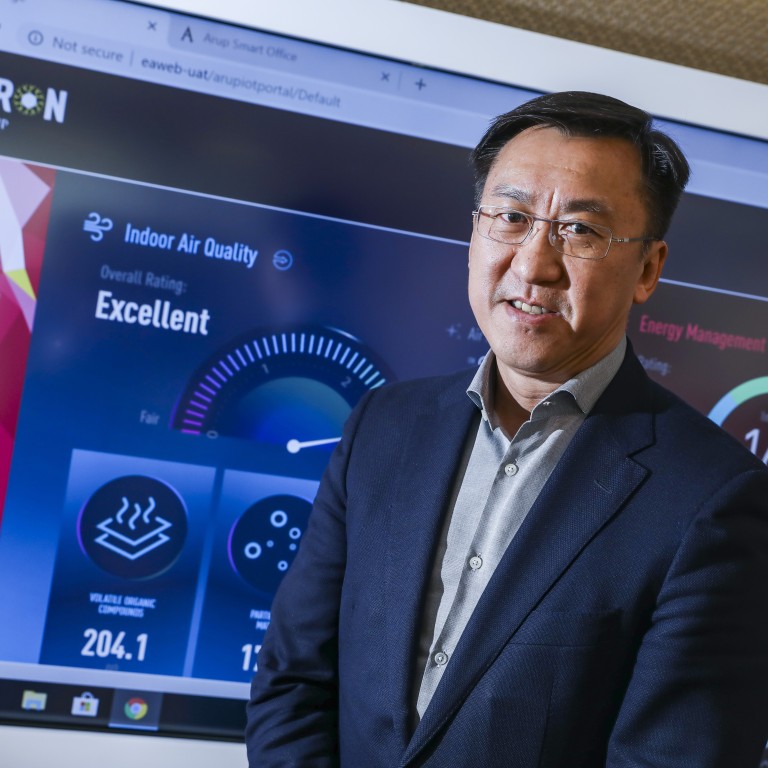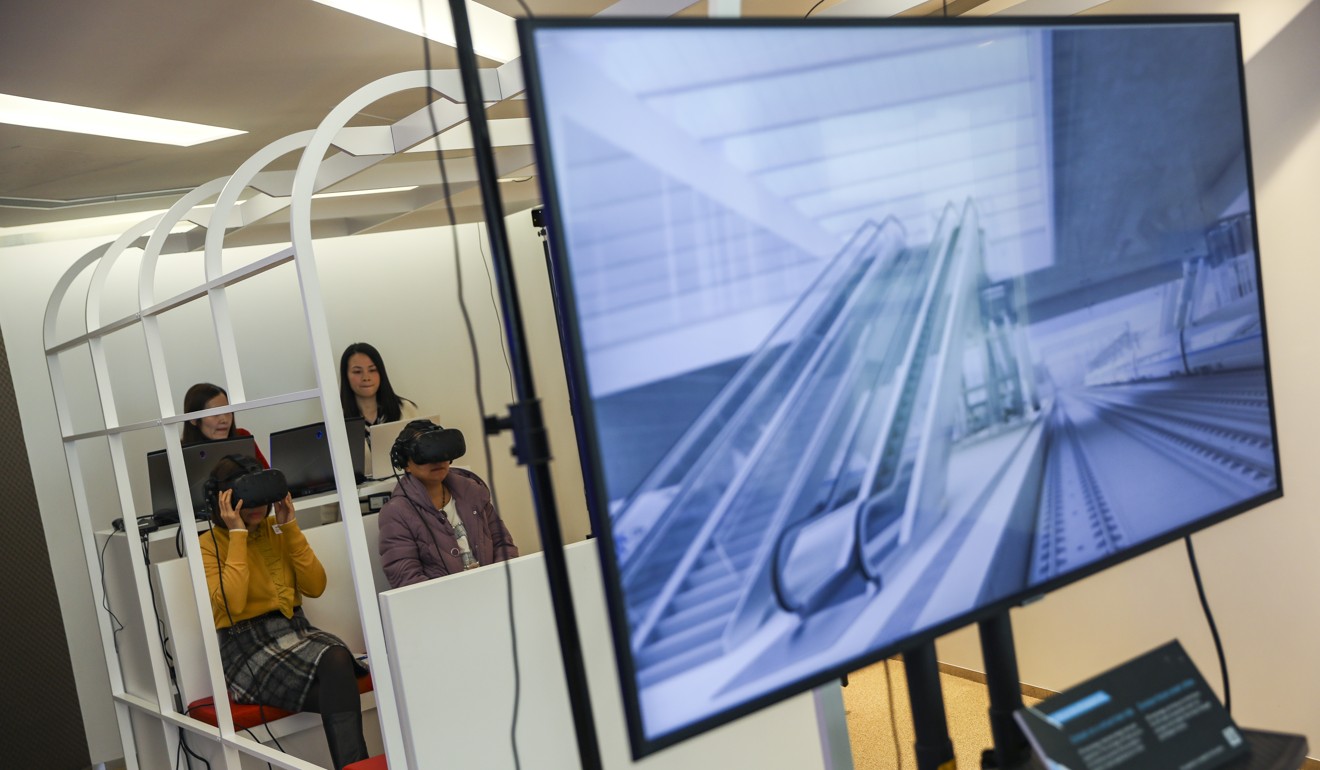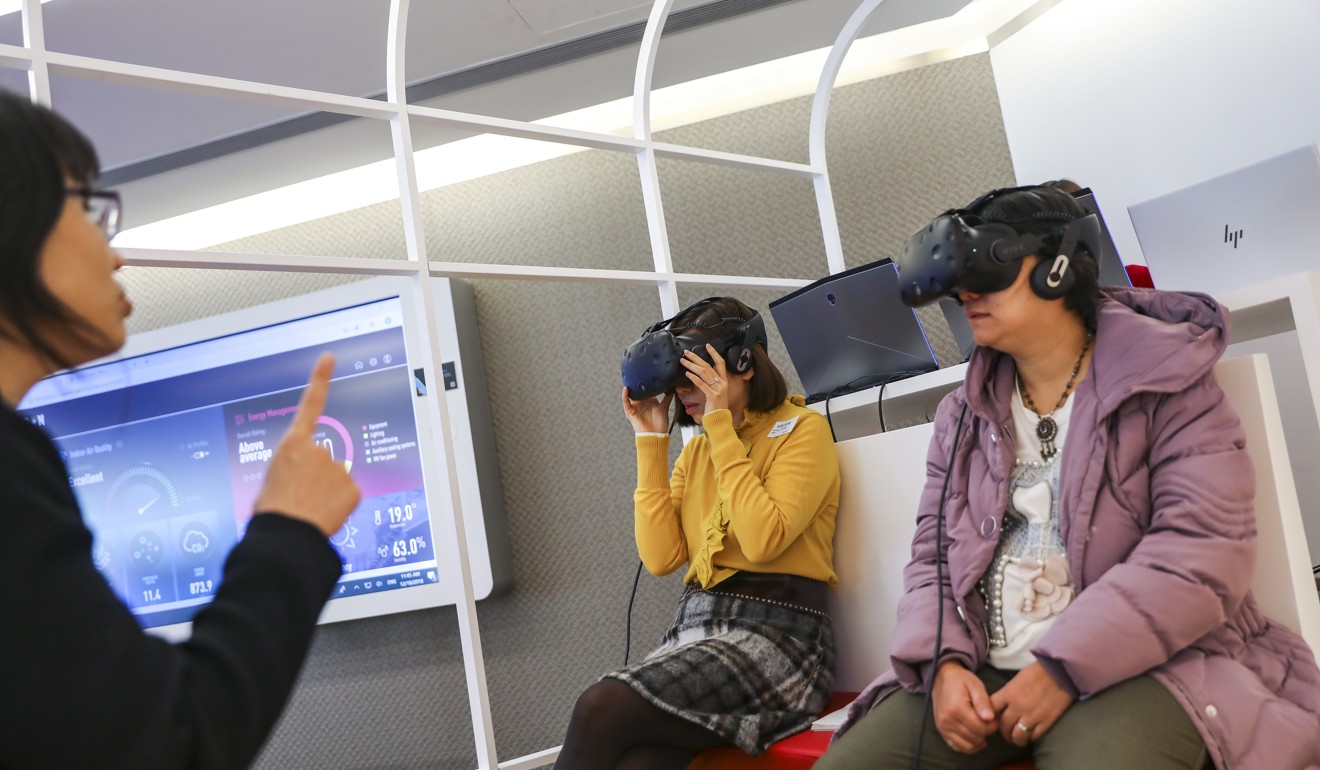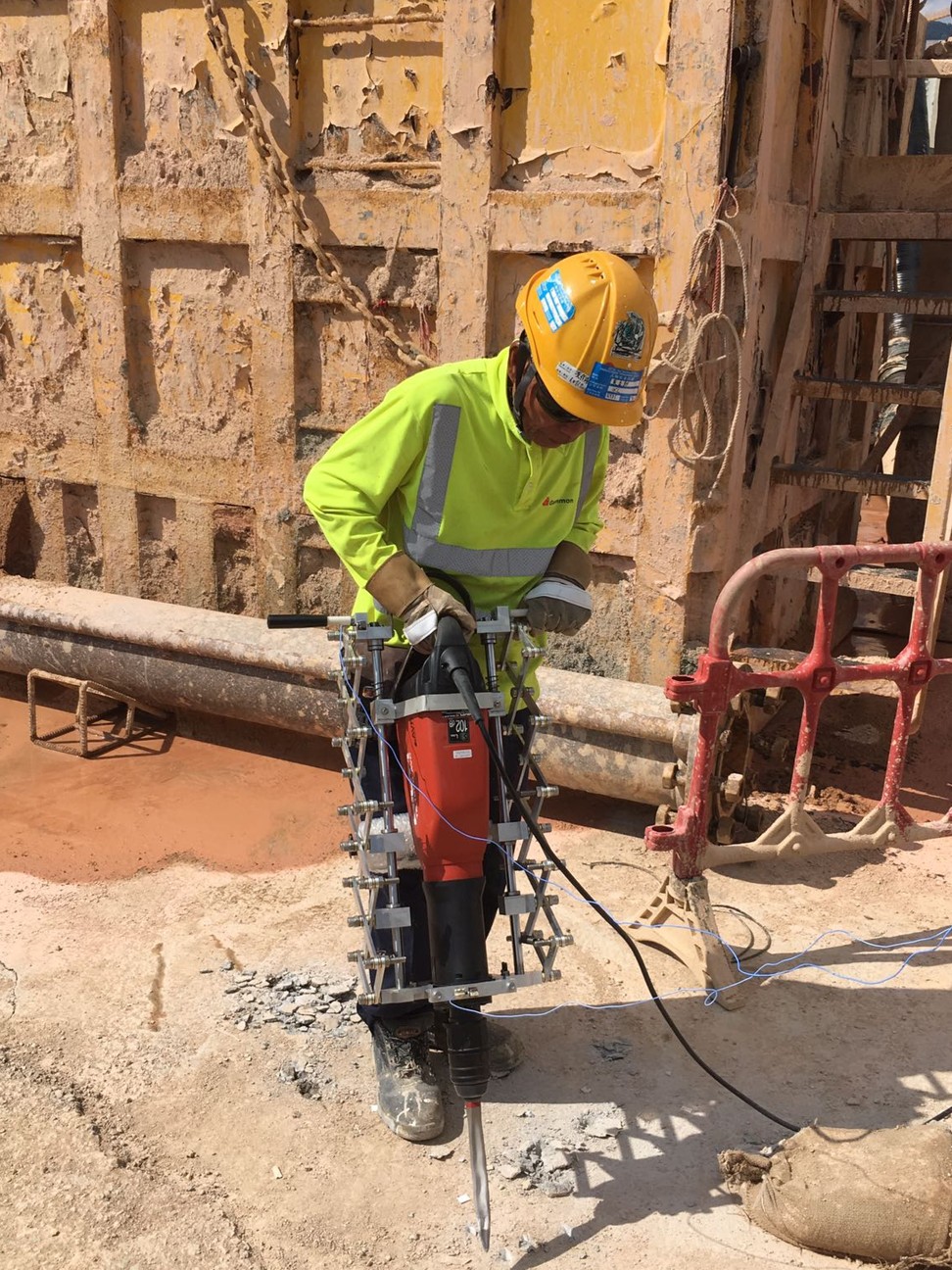
Traditional construction firms building for the future through technology and innovation
- Big engineering and construction firms are striving to innovate and add tech elements to work processes to save costs and boost efficiency
- Engineers need to transform themselves by combining their traditional skills with digital elements, company boss says
On board a high-speed train travelling at 300km/h, passengers can view London’s leafy suburbs and hear the wind whistling by, while feeling the occasional bump as they whizz along the tracks.
This is the simulated scenario users experience through virtual reality (VR) goggles inside the Greater China headquarters of global engineering and consulting firm Ove Arup and Partners, in Kowloon Tong.
The VR train services are modelled on a design the firm created for the British government, which will be used for a consultation with the public and stakeholders on the country’s first domestic high-speed rail link, between Birmingham and London.

Companies in traditional industries such as engineering and construction are striving to innovate and add technological elements to work processes to save costs and boost efficiency.
The VR element in its consulting projects is only part of the technological push Arup is pursuing, according to the firm’s Greater China managing director Michael Kwok.

“Engineering is a traditional industry that has come under the disruption of technology,” Kwok said in an interview. “Engineers also need to transform themselves by combining their traditional skills with digital elements.”
‘Unique and beautiful’ design for Hong Kong-Zhuhai-Macau bridge sets mega project apart
For example, some of the company’s engineers can redraw the three-dimensional layout plan for cables and pipes inside concrete walls of old buildings by using scanners and software. This was impossible without the help of technology.
Kwok said the company was introducing automation to save manpower on repetitive procedures and enhance efficiency and accuracy when formulating consultancy reports.
“People are paranoid about joblessness arising from automation,” he said. “Creativity and human interactions cannot be replaced. What I see for automation is that it will free engineers from repetitive tasks for better use of their time in other work.”
In recent months, dozens of younger staff without engineering training joined Arup’s roughly 1,000-strong workforce at its Hong Kong office, a move Kwok said was vital for bringing in new skills.
“The purpose is to have the newcomers, who are mostly computer programmers, bouncing off their ideas with our engineers,” he said. “It is possible for every idea, concept and even dream to come true.”
However, he added, it was not easy to find the right talent in the city as the IT ecosystem was still developing.
“Jobs such as doctors, lawyers, accountants and architects are still more popular among academic achievers than setting up start-ups,” Kwok said, noting that most of the programmers Arup recently hired came from across the border in mainland China.
Hong Kong faces tech sector challenges, experts say
For a labour-intensive industry such as construction, a Hong Kong industry leader, Gammon Construction, developed and deployed technologies to shorten work time, minimise casualties and boost productivity.
Gammon’s head of innovation, Paul Morris, said the company set up a unit last year which distributed innovations from international start-ups and academia and commercialised technologies developed and tested internally.
“We are stretching the limits of human capability by making use of the latest advances in robotics and automation,” he said.
“The construction technologies we have embraced are making our projects more efficient and the lives of our workers less strenuous and safer.”

A case in point is a device for jackhammers developed in partnership with Hong Kong Polytechnic University, which does not require electricity and cost much less than similar ones in the market. The device, which is put on the jackhammer, reduces vibrations by 90 per cent and increases the power to break concrete by 30 per cent.
Another example is the use of temperature sensors to test the strength of concrete.
The sensors work on a real-time basis, meaning workers can proceed to the next stage of a job without having to wait for laboratory results on the strength of recently poured concrete. Still, the concrete will be tested in a lab for quality assurance.
Morris said it normally took five days per floor to complete concrete work, which meant 150 days for a 30-storey building. By using the smart device, the time was cut by 20 per cent or 30 work days.
Hong Kong start-ups stymied by lack of innovation culture, survey finds
Professor Eric Tsui from the department of industrial and systems engineering of Polytechnic University said industries should aim for automation.
“Hong Kong has a lot of room to expand in automation,” he said. “Automation will bring a lot of savings in manpower and costs in some routine or straightforward tasks.”
However, whether the manpower released could be redeployed would depend on factors such as whether the workers in question could be retrained and companies had sufficient opportunities, he said.
“Most Hong Kong companies are not yet prepared for automation,” Tsui said. “They need a paradigm shift to their mentality. With the right mentality, they will appreciate and create a new dimension of opportunities and jobs.”
He added that Gammon designed its own AI-powered software to process and analyse a large amount of data, which helped automate weekly safety reports and intelligent risk assessments.

